HCodi
Newbie
- Messages
- 13
Hi guys,
First timer here and first Warmoth build. I wanted a 5 string bass tuned in High C that was light so it wouldn't hurt my back. I always have enjoyed building things but building a bass from scratch seemed way too challenging for me. So ordering from Warmoth seemed like a great choice!
After months and months (perhaps even years...) of going through the Warmoth website trying different combinations and going through numerous threads in this forum, and ultimately bothering the guys at Warmoth with many questions... I finally decided to pull the trigger. This is what I ordered:
-Roasted Maple neck with Wenge laminates and unique choice of Pau Ferro Fingerboard. Ziricote Headstock veneer and Graphite Rods. No inlays, I would install my own.
-Extra Light Roasted Alder body with Walnut laminate accent and Spruce top.
This is what the body and neck looked like when I received them. It took longer than usual because of Covid, but the wait was way worth it!
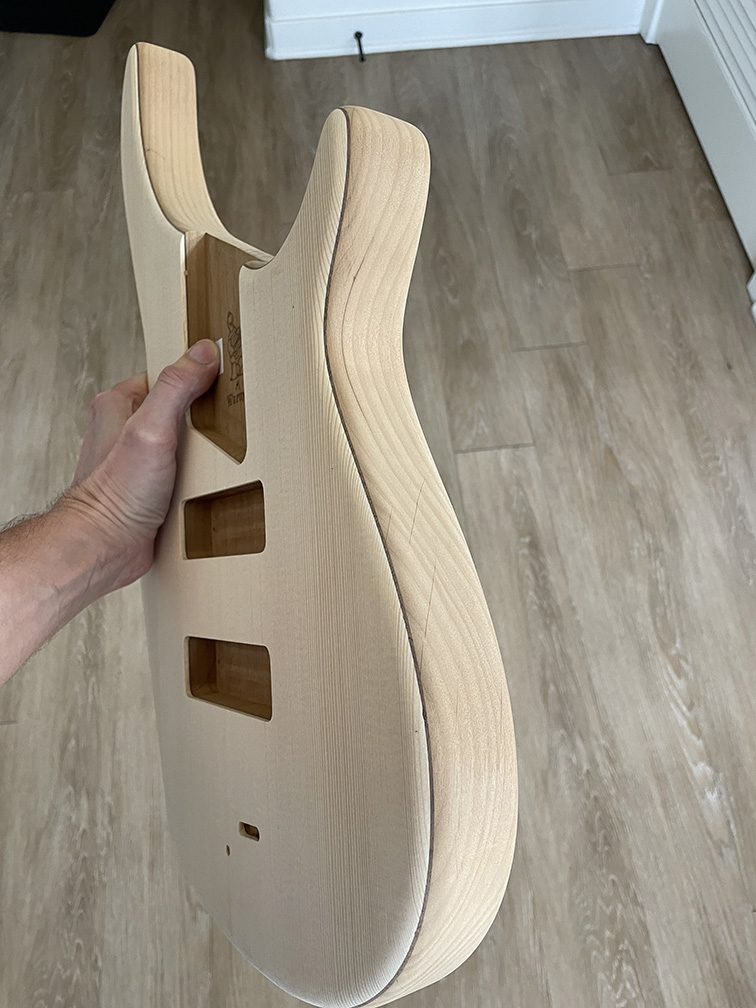
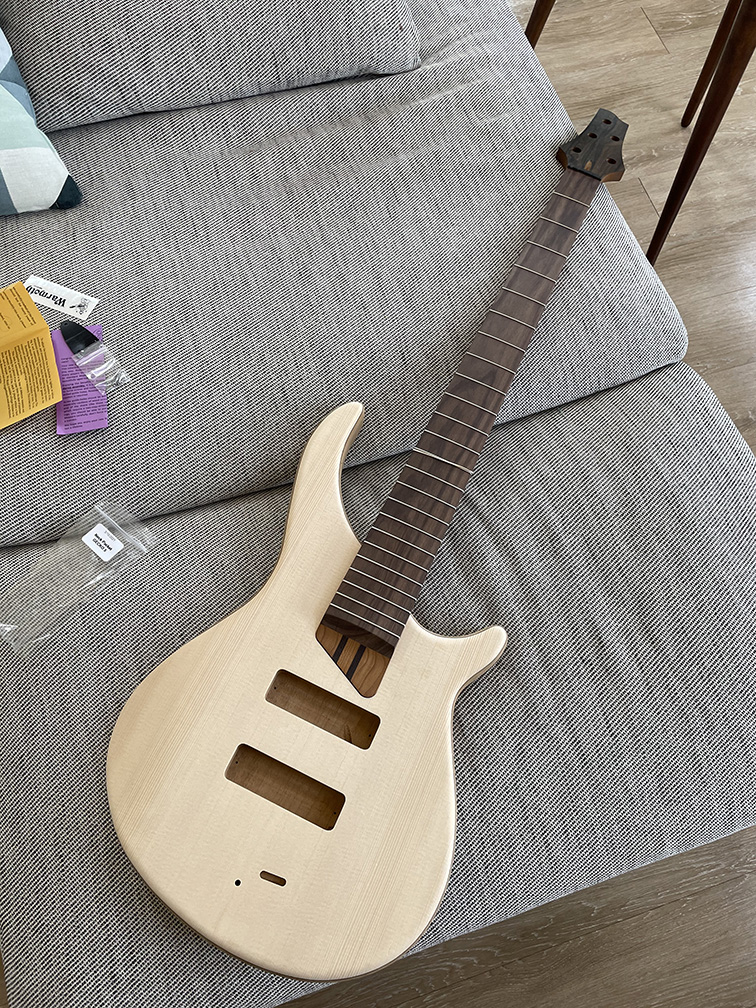
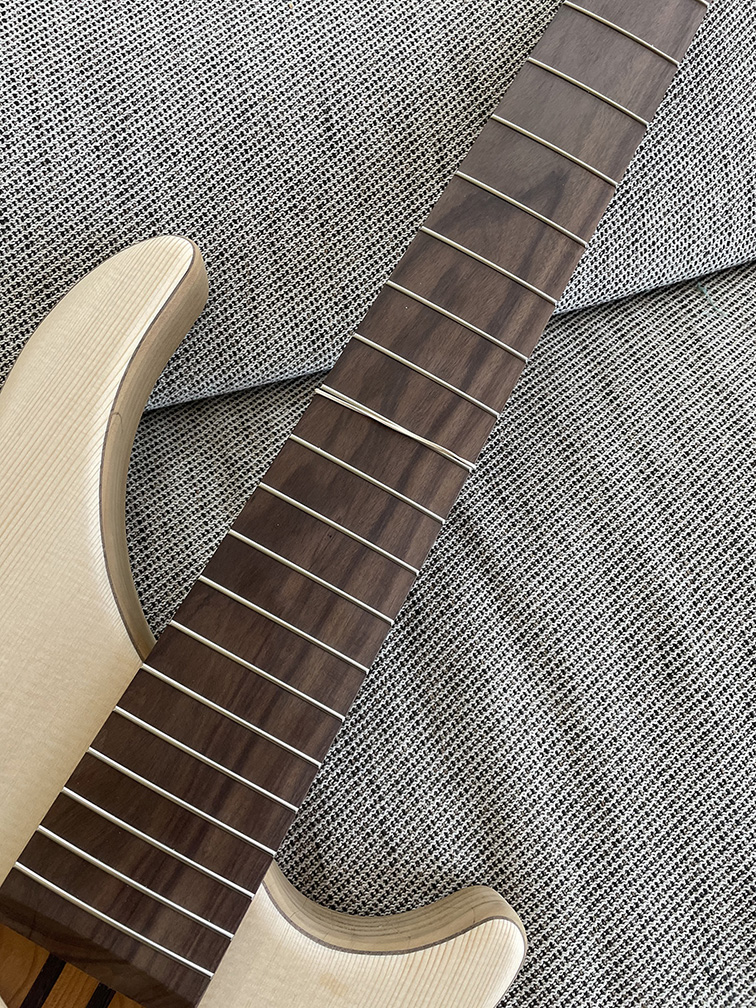
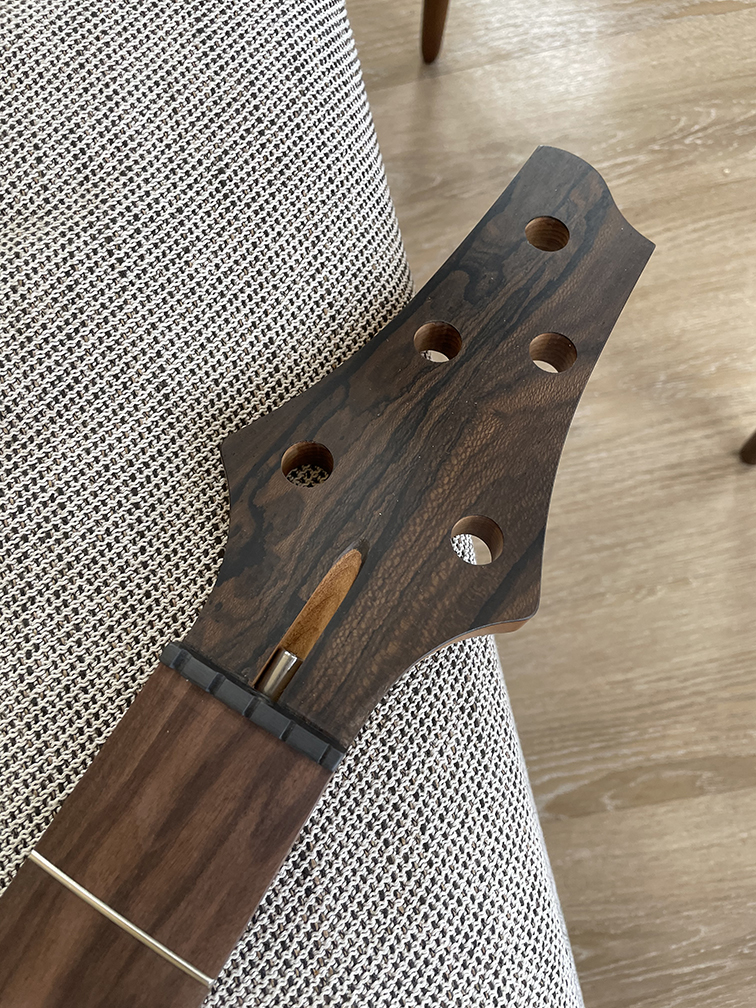
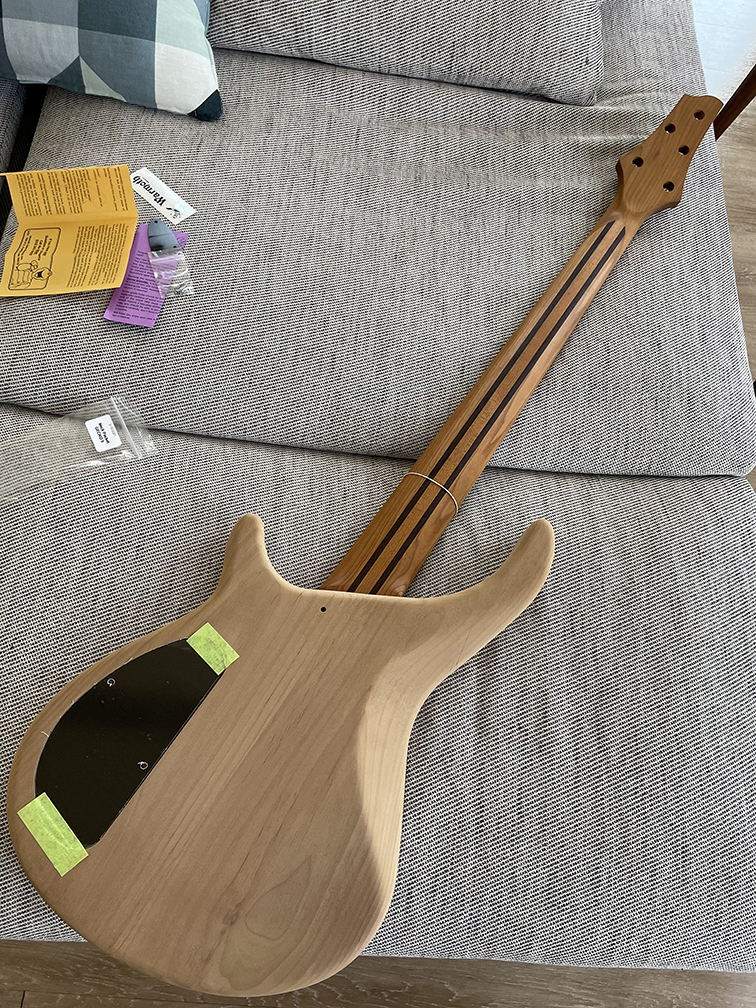
The body weighs 3.6lbs and the neck weighs 2.9lbs. Pretty light setup so far!
These are the electronics & hardware:
-Gotoh Res-o-Lite in black nickel Tuners.
-Ray Ross 5 string bridge with 19mm string spacing in black nickel.
-Delano SBC 5 HE/S Driver Dual coil pickups.
-Trickfish Flex Core 4 band preamp (formerly Mike Pope preamp). Vol (w Push/Pull Active/Passive), Blend, Passive Tone, Stacked bass/treble and Stacked hi mid/lo mid.
-It will be tuned in High C with Fodera light 5 string set (28, 40, 60, 80 and 100).
These are the parts I will be making:
-Custom wooden knobs with Luminlay dots.
-Custom Ziricote pickguard, which will be held with magnets.
-Custom Ziricote electronics back cover with magnets as well.
-Custom Ziricote truss rod cover with magnets as well.
And this is my initial sketch/design. The solid color paint will go only on the top, basically the spruce, and the rest will be left transparent. All in satin finish:
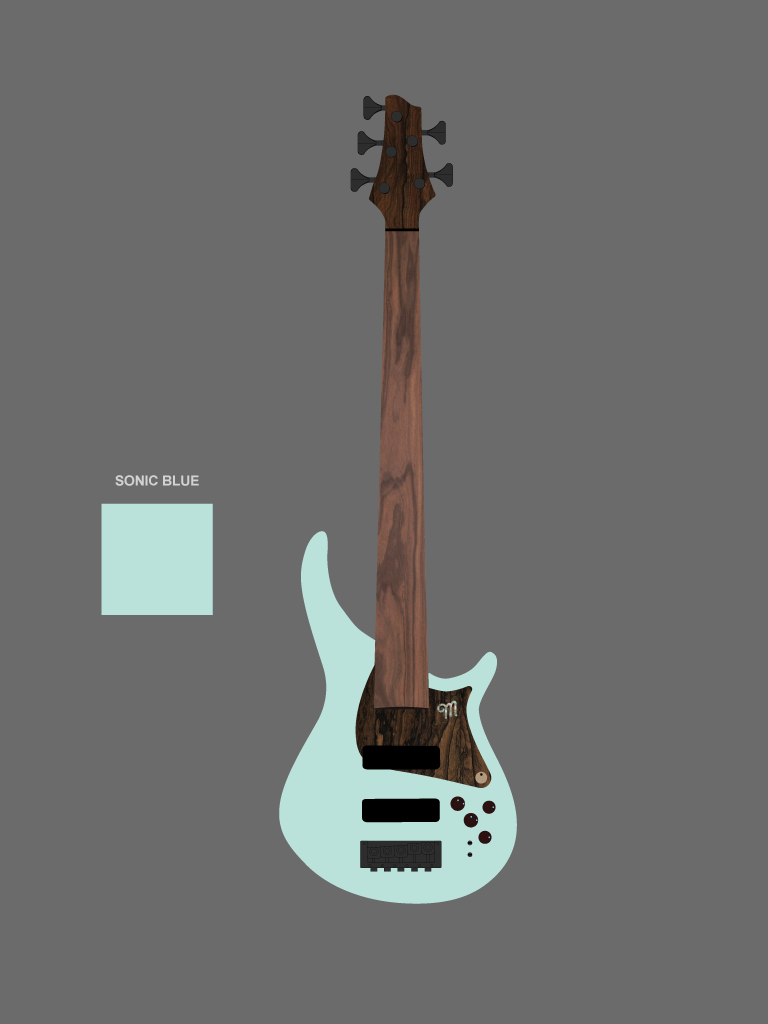
A quick and dirty mockup for the placement of the pickguard:
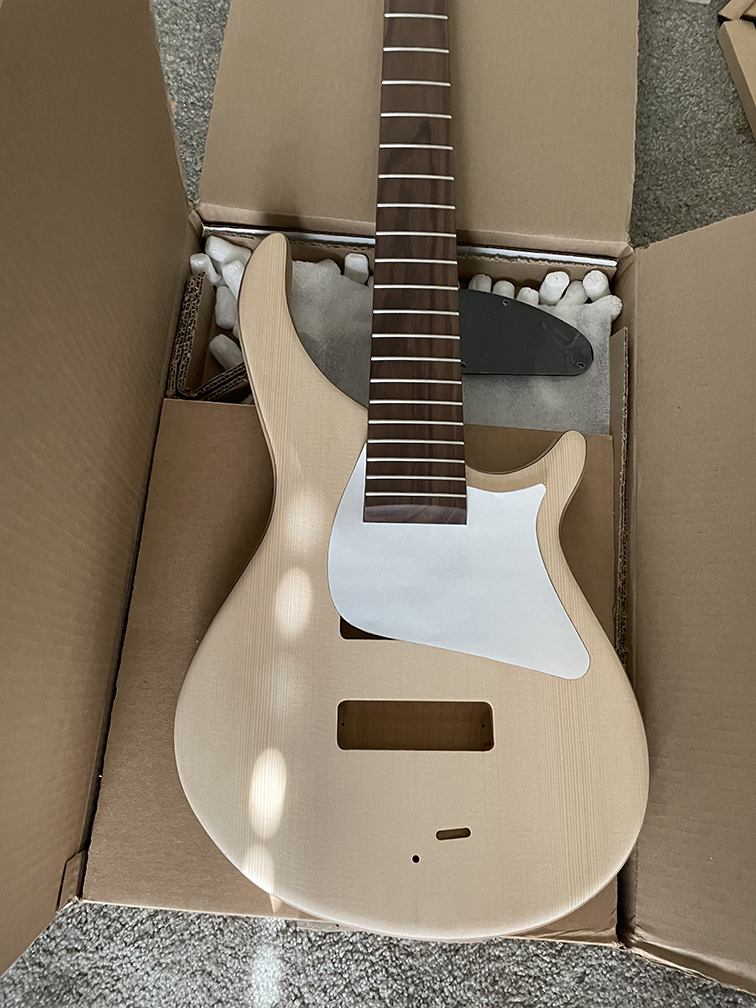
I have already made quite some progress, but it takes a while to prepare and upload stuff, so hopefully I will be updating this thread soon.
I hope you like it!
First timer here and first Warmoth build. I wanted a 5 string bass tuned in High C that was light so it wouldn't hurt my back. I always have enjoyed building things but building a bass from scratch seemed way too challenging for me. So ordering from Warmoth seemed like a great choice!
After months and months (perhaps even years...) of going through the Warmoth website trying different combinations and going through numerous threads in this forum, and ultimately bothering the guys at Warmoth with many questions... I finally decided to pull the trigger. This is what I ordered:
-Roasted Maple neck with Wenge laminates and unique choice of Pau Ferro Fingerboard. Ziricote Headstock veneer and Graphite Rods. No inlays, I would install my own.
-Extra Light Roasted Alder body with Walnut laminate accent and Spruce top.
This is what the body and neck looked like when I received them. It took longer than usual because of Covid, but the wait was way worth it!
The body weighs 3.6lbs and the neck weighs 2.9lbs. Pretty light setup so far!
These are the electronics & hardware:
-Gotoh Res-o-Lite in black nickel Tuners.
-Ray Ross 5 string bridge with 19mm string spacing in black nickel.
-Delano SBC 5 HE/S Driver Dual coil pickups.
-Trickfish Flex Core 4 band preamp (formerly Mike Pope preamp). Vol (w Push/Pull Active/Passive), Blend, Passive Tone, Stacked bass/treble and Stacked hi mid/lo mid.
-It will be tuned in High C with Fodera light 5 string set (28, 40, 60, 80 and 100).
These are the parts I will be making:
-Custom wooden knobs with Luminlay dots.
-Custom Ziricote pickguard, which will be held with magnets.
-Custom Ziricote electronics back cover with magnets as well.
-Custom Ziricote truss rod cover with magnets as well.
And this is my initial sketch/design. The solid color paint will go only on the top, basically the spruce, and the rest will be left transparent. All in satin finish:
A quick and dirty mockup for the placement of the pickguard:
I have already made quite some progress, but it takes a while to prepare and upload stuff, so hopefully I will be updating this thread soon.
I hope you like it!


